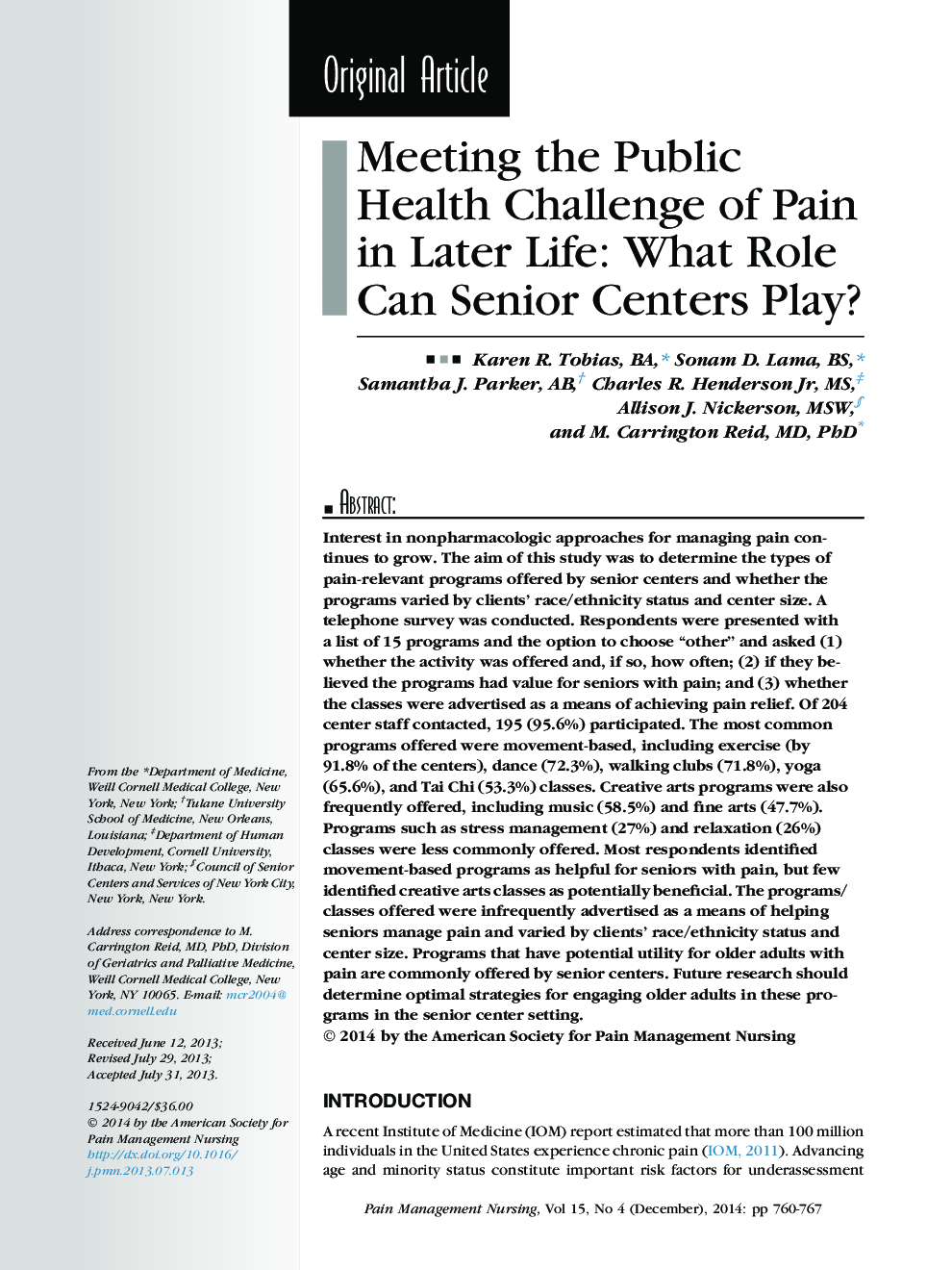| Article ID | Journal | Published Year | Pages | File Type |
|---|---|---|---|---|
| 2677985 | Pain Management Nursing | 2014 | 8 Pages |
Interest in nonpharmacologic approaches for managing pain continues to grow. The aim of this study was to determine the types of pain-relevant programs offered by senior centers and whether the programs varied by clients’ race/ethnicity status and center size. A telephone survey was conducted. Respondents were presented with a list of 15 programs and the option to choose “other” and asked (1) whether the activity was offered and, if so, how often; (2) if they believed the programs had value for seniors with pain; and (3) whether the classes were advertised as a means of achieving pain relief. Of 204 center staff contacted, 195 (95.6%) participated. The most common programs offered were movement-based, including exercise (by 91.8% of the centers), dance (72.3%), walking clubs (71.8%), yoga (65.6%), and Tai Chi (53.3%) classes. Creative arts programs were also frequently offered, including music (58.5%) and fine arts (47.7%). Programs such as stress management (27%) and relaxation (26%) classes were less commonly offered. Most respondents identified movement-based programs as helpful for seniors with pain, but few identified creative arts classes as potentially beneficial. The programs/classes offered were infrequently advertised as a means of helping seniors manage pain and varied by clients’ race/ethnicity status and center size. Programs that have potential utility for older adults with pain are commonly offered by senior centers. Future research should determine optimal strategies for engaging older adults in these programs in the senior center setting.
